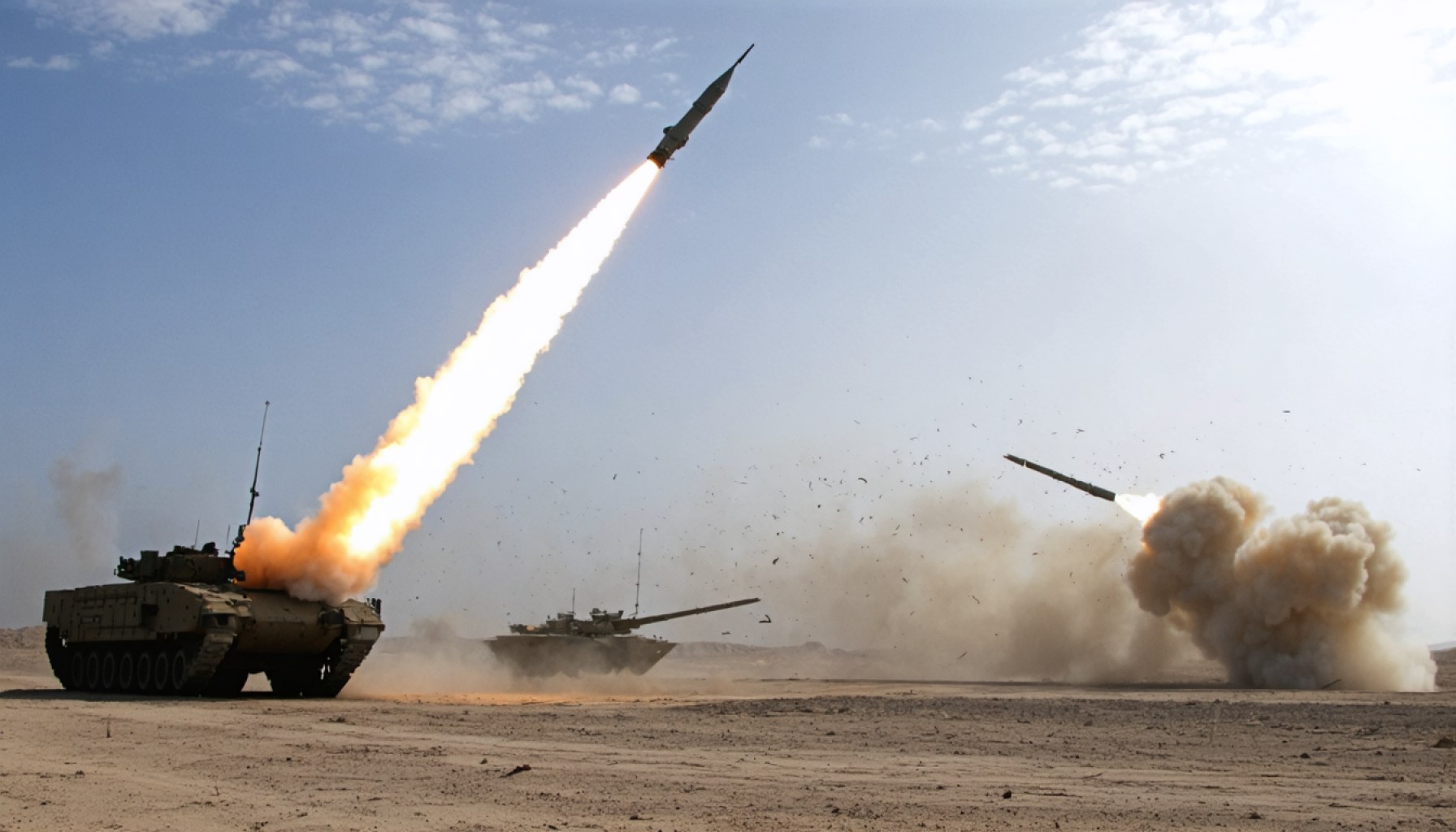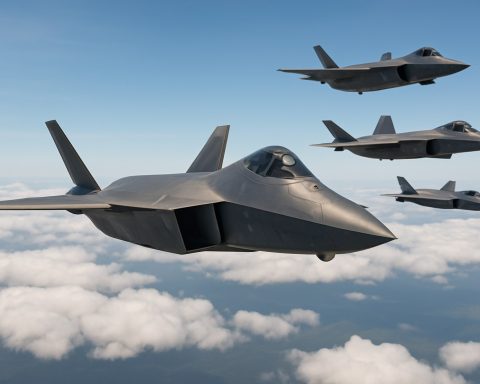- Rocket sirens disrupted central Israel, prompting residents to seek safety as a ballistic missile launched from Yemen targeted the area.
- The Israeli Defense Forces (IDF) successfully intercepted the missile, preventing damage and averting a potential catastrophe.
- Debris from the interception landed in populated areas, causing two injuries amid the chaos of seeking shelter.
- The Houthi rebels in Yemen claimed responsibility for the missile launch, showcasing their capability with video footage.
- US military jets responded by striking Houthi factions in Yemen, underscoring international vigilance against aggression.
- The events highlight the importance of resilience, readiness, and a united stance against global threats.
A thick cloud of tension hung over central Israel as the morning silence shattered with the blaring wails of rocket sirens. At precisely 10:41 a.m., alarms reverberated across bustling streets and quiet neighborhoods, urging residents in Tel Aviv, Holon, and beyond to scramble for safety. Even Jerusalem, steeped in ancient history, was not spared. An alarming barrage of sirens announced the arrival of an unexpected intruder—a ballistic missile launched from Yemen.
The Israeli Defense Forces (IDF), a model of precision and vigilance, took swift action. Their interceptors soared into the sky, tracing the ominous arc of the missile with chilling accuracy. In a feat of engineering prowess and rapid response, the IDF neutralized the missile before it could breach Israeli soil, averting a potential catastrophe. Debris from the interceptors—a testament to the close call—rained unpredictably, with fragments landing on soccer fields and rooftops, leaving a trail of relief and disbelief.
The Houthi rebels in Yemen, emboldened by support from distant allies, claimed responsibility. Their audacity was mirrored by the footage they released, depicting a stark missile launch into the void—a demonstration of intent and capability. Yet the tides turned against them as the IDF, fortified by constant vigilance, proved their defense systems were more than ready for such threats.
Despite the skillful interception, the aftermath rippled through the community. Two individuals sustained injuries amid the chaos of seeking refuge. A woman in her forties, seeking shelter, fell into an unseen pit, her condition settling at moderate severity. Elsewhere, a door turned into an unexpected foe, colliding with another woman and leaving her with lighter injuries. Such incidents exemplify the broader cost of conflict, where even moments of safety can bear risks.
Beyond the borders of Israel, a parallel force moved—US military jets roared into the Yemeni skies, targeting the very factions initiating threats. The United States, tracking the geopolitical tremors, laid down its stance with strikes against the Houthi militants, marking a clear message: aggression will meet a formidable response.
These coordinated actions present more than just a snapshot of military strategy; they underscore a profound message of resilience and readiness. For in a world marked by uncertainties, standing firm and united against threats becomes an essential narrative in the path towards peace. As this drama unfolds, one thing remains clear: vigilance is eternal, and the dance between offense and defense on the global stage continues.
Missile Crisis in Israel: A Closer Look at the High-Stakes Interception Drama
Incident Overview
The recent missile attack events over central Israel offer a deep insight into the complexities of modern warfare and international relations. At 10:41 a.m., citizens in Tel Aviv, Holon, and Jerusalem were sent scrambling as sirens blared an urgent warning: a ballistic missile from Yemen was headed their way. This attack highlights the increased capabilities and reach of hostile groups like the Houthi rebels in Yemen, who claimed responsibility for the launch.
Defense Mechanisms and Strategic Responses
Israel’s Advanced Defense Systems
The Israeli Defense Forces (IDF) have long been recognized for their cutting-edge defense systems, exemplified by the successful interception of the missile. Systems like Iron Dome, David’s Sling, and the Arrow missile defense line are backbone technologies that contribute to national security. The recent incident underscores the effectiveness of these systems, which are designed to detect, intercept, and destroy incoming threats before they can inflict harm.
Iron Dome: Known for countering short-range threats.
David’s Sling: Targets medium- to long-range missiles.
* Arrow System: Designed for long-range ballistic threats.
U.S. Military Involvement
In a display of international solidarity and defense collaboration, the U.S. military conducted airstrikes against the Houthi positions in Yemen. These actions convey strong political and military messages: regional stability is a priority for the U.S., and aggression by militants will face retaliation.
Human and Societal Impact
Although the missile was intercepted, the moments of terror led to injuries as people sought shelter. This underscores the broad physical and psychological toll conflicts impose on civilians. Community resilience is profoundly tested in such scenarios, as both physical and mental health repercussions can be long-lasting.
Technological and Geopolitical Implications
Emerging Threats and Defense Technology
Modern conflicts highlight the evolution of guerrilla warfare tactics, where non-state actors have access to advanced military technology. This necessitates continued advancement and adaptation of defense measures. The IDF’s successful missile interception sends a signal regarding the need for ongoing investment in military technology.
Middle Eastern Political Dynamics
The incident reflects the broader geopolitical tensions in the Middle East, where alliances and hostilities are both dynamic and complex. The involvement of powerful nations like the U.S. illustrates the global stakes involved.
Lessons and Recommendations
To mitigate future risks and enhance readiness, the following steps can be considered:
1. Public Safety Training: Governments could implement regular civilian drills focusing on securing safety quickly and effectively.
2. Community-based Emergency Response: Establish local emergency response teams trained to handle similar crises, thus bridging the gap between initial alert and professional response.
3. Technological Advancements: Continued investments in defense technology and cybersecurity are critical to counter emerging threats.
4. International Diplomatic Efforts: Engage in proactive diplomacy to prevent escalation and foster dialogue among involved nations.
Conclusion
The tension-filled skies over Israel remind us of the delicate peace that must be safeguarded. As technology and geopolitical alliances evolve, so too does the nature of threats. Vigilance combined with technological prowess and international collaboration remains essential in maintaining security and peace.
For more information on global defense strategies, visit U.S. Department of Defense. For updates on Israel’s security initiatives, explore Israel Defense Forces.







